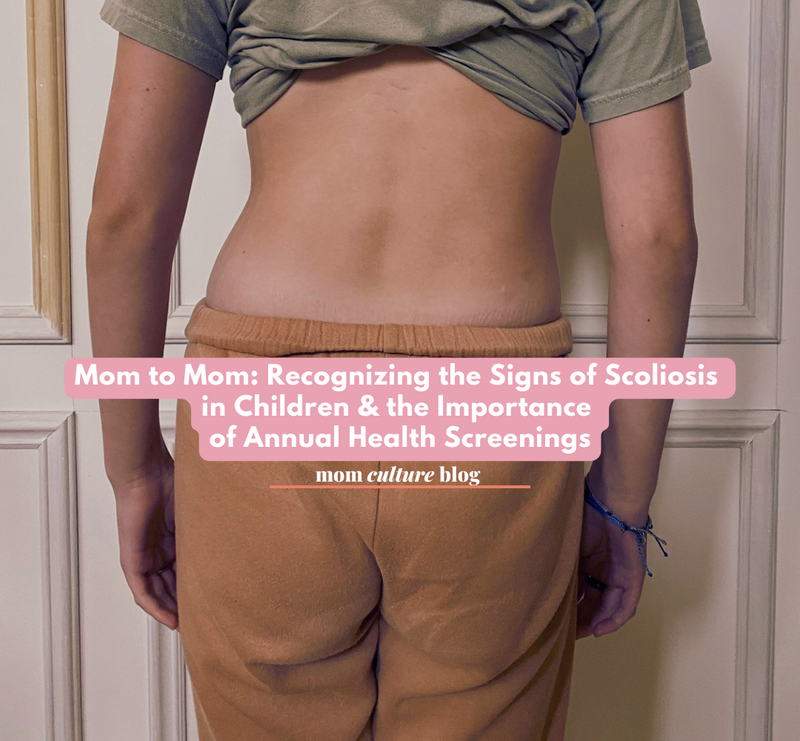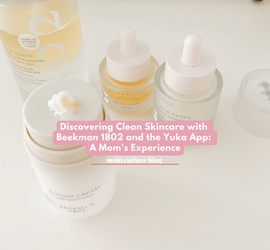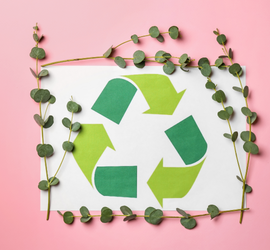
Ladies, as moms, we're always on the lookout for what's best for our little ones. That's why I must share my story about scoliosis and the importance of regular health screenings. My daughter was diagnosed with 43-degree lower lumbar scoliosis at 14 during a routine doctor's appointment. Scoliosis is a condition that affects the spine and can cause it to curve, which can lead to pain, discomfort, and decreased mobility. But with early detection and treatment, we can keep our kids feeling their best!
Here are some of the signs and symptoms of scoliosis to watch for:
- Uneven shoulders
- Rib hump or prominence on one side of the back
- Uneven waist
- Leaning to one side
- Back pain
- Fatigue and discomfort from prolonged standing or sitting
- Reduced flexibility and mobility in the back
- Breathing difficulties in severe cases

If you notice these signs or symptoms in your child, it's time to talk with their healthcare provider. Early detection and treatment can help prevent the progression of the curvature and improve outcomes.
And who doesn't want their kids to feel their best?!
It's also essential to have regular health screenings for our children, especially during puberty, when scoliosis can progress more quickly. The American Academy of Pediatrics recommends that all children be screened for scoliosis at least once between the ages of 10 and 18 years old. This screening can be done during regular check-ups with a healthcare provider or during school check-ups. It's like a quick check to ensure everything is in order and in line.
How is pediatric scoliosis diagnosed?
-
Physical examination: A healthcare provider will examine your child's back, neck, and arms to look for any visible signs of spinal curvature, uneven shoulders or hips, and any other symptoms.
-
X-rays: X-rays are the most commonly used imaging test for diagnosing scoliosis. They provide detailed images of the spine that can help the healthcare provider assess the degree and pattern of spinal curvature.
-
Other imaging tests: In some cases, additional imaging tests such as MRI or CT scans may be needed to get a better understanding of the underlying cause of the scoliosis and to help plan treatment.
-
Screening: Screening for scoliosis is usually done during regular check-ups with a healthcare provider, especially during puberty when scoliosis can progress more quickly. Schools may also conduct periodic screenings.

What are the treaments for diagnosed scoliosis in children and teens?
The treatment for pediatric scoliosis depends on several factors, including the severity of the curvature, the child's age, and the underlying cause of the scoliosis. The following are some common treatment options for pediatric scoliosis:
-
Observation: For mild cases of scoliosis, a healthcare provider may recommend observation and re-evaluation every 4 to 6 months to monitor the progression of the curvature.
-
Bracing: For moderate cases of scoliosis, a healthcare provider may recommend a brace to help slow down the progression of the curvature and prevent the need for surgery. The brace is typically worn all day, except during physical activities.
-
Physical therapy: Physical therapy can help improve posture, strengthen the muscles, and prevent the curvature from getting worse.
-
Surgery: For severe cases of scoliosis, surgery may be necessary to correct the spinal curvature and prevent future complications. The type of surgery will depend on the severity of the scoliosis and other factors.

What degree is bracing most effective?
Bracing is most effective for children with scoliosis who have a moderate curvature of the spine, typically between 25 and 40 degrees. Bracing can help slow down the progression of the curvature and prevent the need for surgery in some cases.
However, it's important to note that the effectiveness of bracing can vary depending on several factors, including the child's age, the pattern and severity of the curvature, and the child's compliance with wearing the brace. In some cases, bracing may not be effective in correcting the curvature, and surgery may still be necessary.


What degree curve is surgery usually suggested?
The decision to recommend surgery for pediatric scoliosis typically depends on several factors, including the severity of the curvature, the child's age, and the underlying cause of the scoliosis. In general, surgery is typically recommended for children with scoliosis who have a curve greater than 45 degrees.
It's important to note that the recommendation for surgery can vary depending on the specific case of scoliosis, and the decision to undergo surgery is usually made by a team of healthcare providers after considering all available options and factors.
In some cases, a healthcare provider may recommend observation or bracing for mild to moderate cases of scoliosis, and surgery may only be considered if the curvature progresses or if the child experiences significant pain or functional impairment.
Advocate Like A Mother
In conclusion, as moms, let's keep our eyes peeled for scoliosis and ensure our little ones have regular health screenings. Early detection and treatment can keep our kids feeling their best, and that's what it's all about! My daughter's diagnosis at 14 reminds me of the importance of regular check-ups and eyeing for symptoms. Trust me. You want to start immediately.

Share your thoughts and experiences in the comments below and let's engage in this important conversation!
I also have a highlight reel of her journey if you would like to see more about scoliosis and her brace HERE



